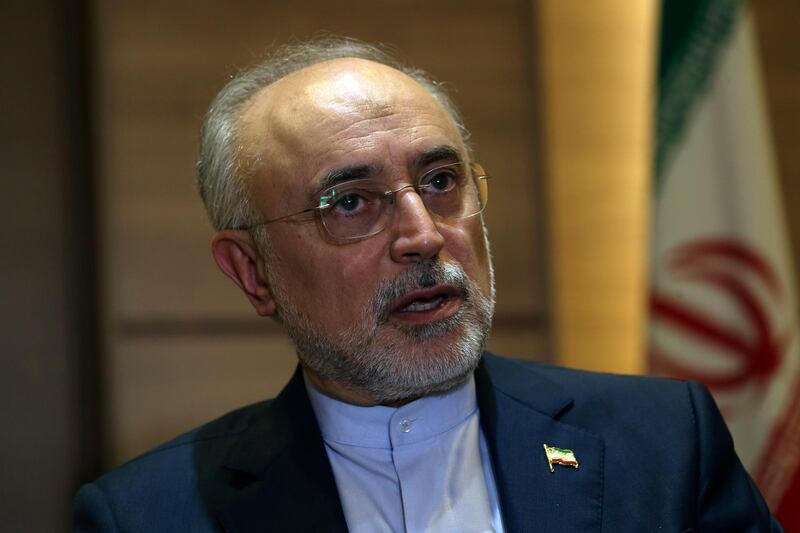The head of Iran’s nuclear programme said on Sunday that the country has begun "preliminary activities" to design a modern process for 20 per cent uranium enrichment for its 50-year-old research reactor in Tehran.
Restarting enrichment at that level would mean Iran had withdrawn the 2015 nuclear deal it struck with world powers, an accord that US President Donald Trump already pulled America out of in May.
However, Ali Akbar Salehi’s comments appeared to be aimed at telling the world Iran would slowly restart its programme. If it chooses, it could resume mass enrichment at its main facility in the central town of Natanz.
Speaking on state television, Mr Salehi said adding the “modern fuel” would increase efficiency at the Tehran research reactor that consumes 20-per cent enriched fuel.
_______________
Read more:
Mike Pompeo’s Iran summit aims to coalesce regional efforts against Tehran
_______________
“We are on the verge” of being ready, he said.
In June, Iran informed the UN’s nuclear watchdog that it will increase its nuclear enrichment capacity within the limits set by the 2015 agreement. Iran continues to comply with the terms of the deal, according to the UN, despite the American pullout.
Mr Salehi heads the Atomic Energy Organization of Iran, whose Tehran campus holds the nuclear research reactor given to the country by the US in 1967 under the rule of the shah. Following this American ‘Atoms for Peace’ donation, Iran was convulsed by its 1979 revolution and the subsequent takeover and hostage crisis at the US embassy in Tehran.
For decades, Western nations have been concerned about Iran’s nuclear programme, accusing Tehran of wanting atomic weapons. Iran has said its programme is for peaceful purposes, but it faced years of economic sanctions.
The 2015 nuclear deal Iran struck with world powers, including the US under former president Barack Obama, was aimed at relieving those fears. Iran agreed to store its excess centrifuges at its underground Natanz enrichment facility under constant surveillance by the UN nuclear watchdog, the International Atomic Energy Agency. Iran can use 5,060 older-model IR-1 centrifuges at Natanz, but only to enrich uranium up to 3.67 per cent.
That low-level enrichment means the uranium can be used to fuel a civilian reactor but is far below the 90 per cent needed to produce a weapon. Iran also can possess no more than 300 kilograms of that uranium. That’s compared to the 10,000kg of higher-enriched uranium it once had.
Mr Trump, who campaigned on a promise to tear up the nuclear deal, said he ultimately pulled America out of the accord over Iran’s ballistic missile programme and its malign influence on the wider Middle East.
In an interview in September with the Associated Press, Mr Salehi gave a warning that Iran could begin mass production of more advanced centrifuges if the deal collapses.
“If we have to go back and withdraw from the nuclear deal, we certainly do not go back to where we were before,” Mr Salehi said at the time. “We will be standing on a much, much higher position.”





